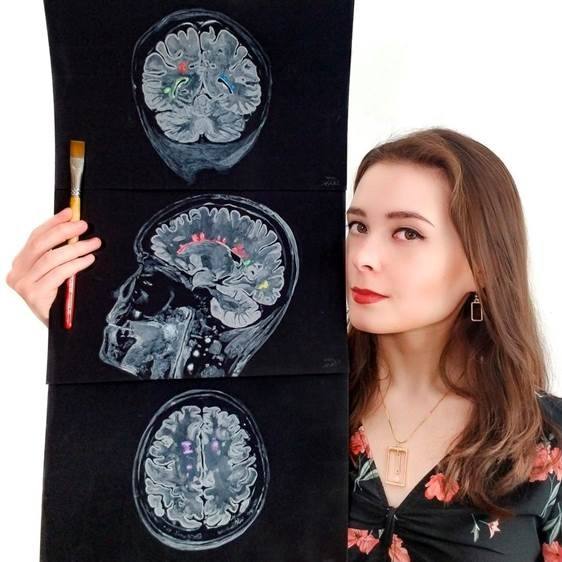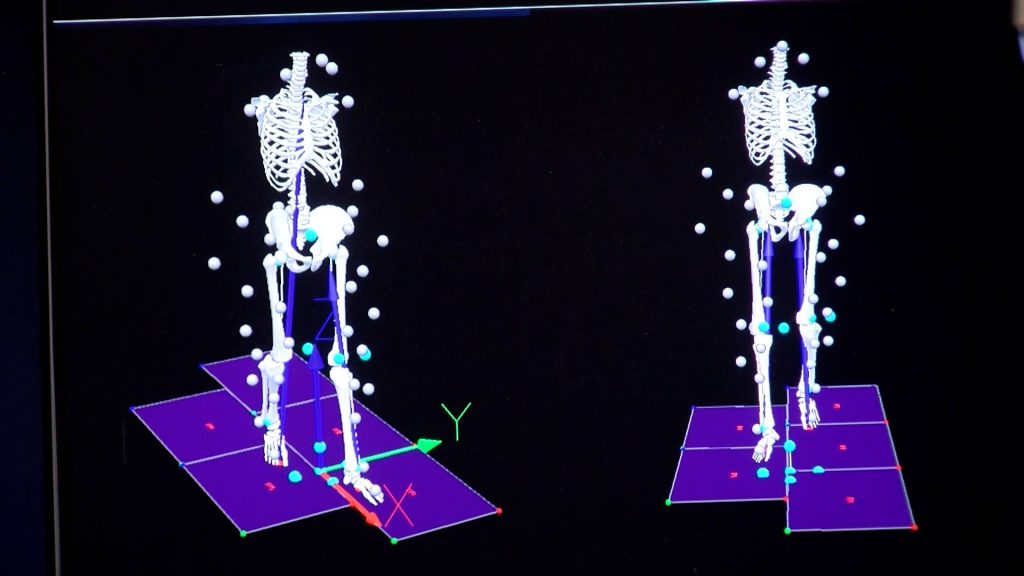-
Neurosciences
(VIDEO) Multiple sclerosis fuels artist’s work
How does someone deal with a diagnosis of multiple sclerosis (MS), a potentially disabling disease that attacks nerves in the brain and spinal cord?
For May Ling Kopecky, who was diagnosed with MS at Mayo Clinic as a teen, making art and music helps her share what it's like to live with a chronic disease.
"When I'm playing music, I feel like I'm able to just let myself express these things without really thinking too hard about it because it just comes out," says May Ling, now 30, playing a Beethoven piece at the piano, one of the roughly dozen instruments she plays.
Music and art infuse the Kopecky family home in Plymouth, Minnesota. String instruments line the living room across from the piano, and original artwork decorates the walls. May Ling's studio is down the hall.
"I've been drawing and painting since before I can remember," she says, pencil in hand.
Journalists: Broadcast-quality video (2:29) is in the downloads at the end of this post. Please courtesy: "Mayo Clinic News Network." Read the script.
Multiple sclerosis diagnosis
May Ling vividly recalls when MS entered the picture. "The first clear MS symptom that I had was when I was 13. I would bend my head forward, and I would get this electric buzzing sensation in my neck and spine," she says, describing a symptom known as Lhermitte's sign.
Like some MS symptoms do, that buzzing stopped in a few weeks. But at age 15, muscle spasms in her torso prompted May Ling's parents to bring her to Mayo Clinic, where a neurological exam and imaging tests led to an MS diagnosis.
"Multiple sclerosis is called a demyelinating disease," explains Dr. Eoin Flanagan, May Ling's neurologist. "The myelin is the insulation that goes across the nerves. What happens in multiple sclerosis is your immune system attacks that myelin and tears it away, and then the nerves don't work as well. That can be in the brain, within the spinal cord or within the optic nerves."
The attacks cause nerve inflammation and swelling that damage nerve fibers. The damage leads to scarring, or sclerosis, visible as white lesions on MRI scans of the brain and spinal cord.
That damage can cause symptoms such as vertigo, vision loss, and numbness or weakness, typically on one side of the body.
Sitting at the piano, trying to remember a musical score, May Ling describes brain fog, another MS symptom. Double vision, fatigue and heat intolerance also are among her challenges. Her thermal, insulated bottle with ice water is a constant companion.
Through her art, May Ling shares what others may not see. "Through painting my MRI scan, I'm also coming to terms with the fact that, OK, this isn't a fake symptom. This is real because I'm looking at the damage," says May Ling, who works in disabilities services in higher education.

New treatments for multiple sclerosis
About 2.8 million people in the world have MS, according to the National Multiple Sclerosis Society.
May Ling has the relapsing-remitting form of MS, marked by symptom attacks and remission periods. This form often leads to secondary-progressive MS with symptoms worsening over time. Newer disease-modifying medications are suppressing MS attacks for many patients.
"With the new stronger medications that we have for MS, we're really seeing a great hope for our patients," Dr. Flanagan says, noting a decrease in patients relapsing and getting new lesions.
May Ling has had a similar story. "Her MRIs have been stable, and she's not had any new attacks or new relapses," Dr. Flanagan says.
Gait monitoring to detect early MS changes

With the goal of early intervention to prevent problems, clinicians also are incorporating gait monitoring to look for clues to patients' worsening MS symptoms.
Lack of coordination and unsteady walk are common MS symptoms. In gait monitoring, patients wear sensors on their arms, legs and chest while walking. Data collected may provide information about hard-to-detect changes.
"With gait monitoring, we can see it and track it along, and then we can make treatment adjustments or maybe add in a different treatment to try to prevent that worsening," Dr. Flanagan says.
May Ling had her gait monitored at a recent appointment. "When I was being tested, I was like, 'Oh, I'm kind of walking on this foot weird sometimes, aren't I?'"
Managing multiple sclerosis at all ages

For May Ling, Mayo Clinic has been a trusted healthcare partner for more than a decade as she learned how to manage her chronic disease.
"All the doctors explained things in a way that, as a teenager, I could understand," she says. "Because I had a good experience, I decided to, even as now an adult patient, continue going there. All my neurologists have been really good about telling me exactly what MS is and what sort of treatments there are and explaining (my) MRI scans."
MS sometimes is called an invisible illness. To counter that, May Ling's realistic drawings and paintings invite discussion about living with a chronic illness by showing others, for example, what it's like to have double vision. She exhibits her work regionally and nationally.
"I'm communicating with the viewers about, you know, what my experience is," May Ling says. "I always find it super rewarding when somebody else comes up to me and says something like, 'I see myself in this work.'"







